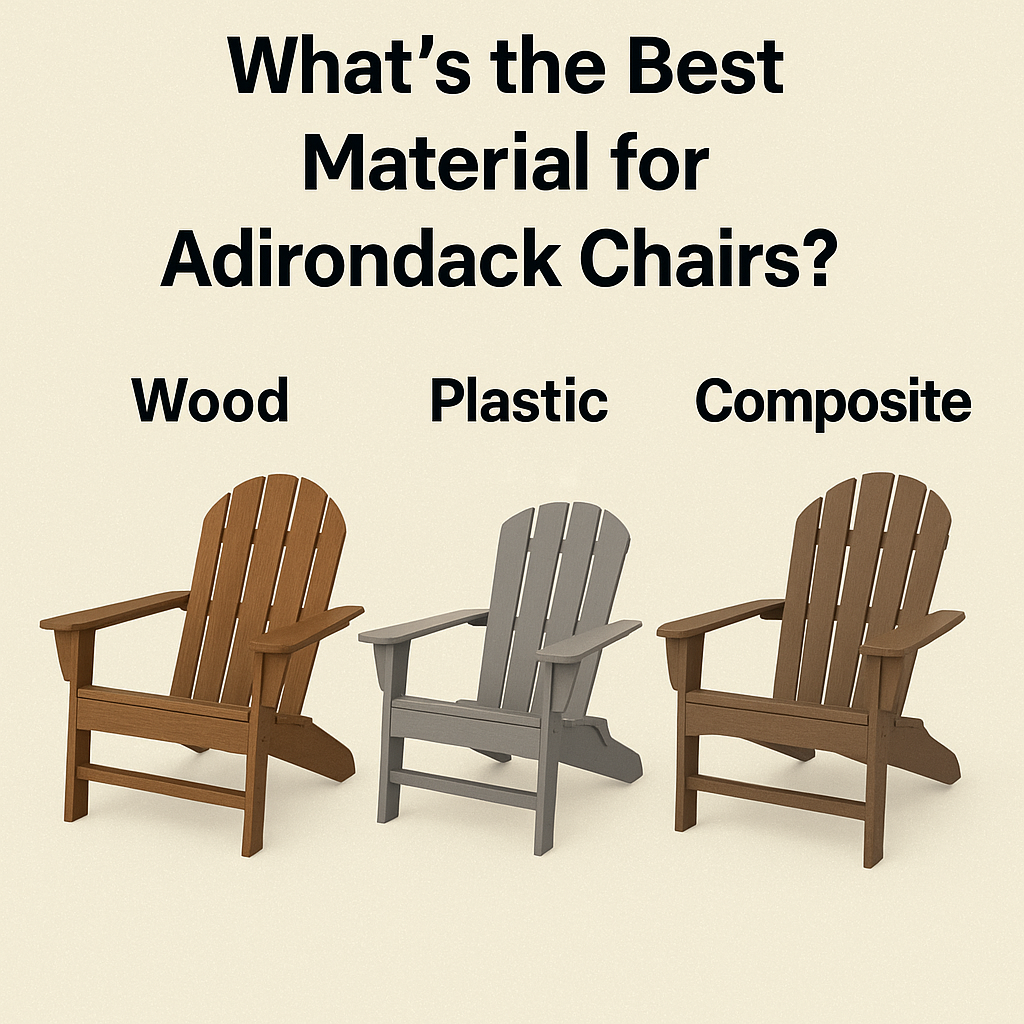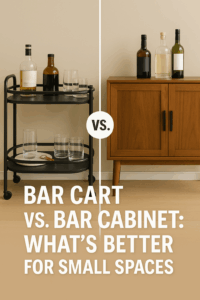Whether you’re furnishing a lakeside retreat or a sunny backyard patio, choosing the right material for your Adirondack chair is key to comfort, durability, and maintenance. With options ranging from wood to recycled plastic and metal, it’s important to understand the pros and cons of each.
Let’s dive into the best materials for Adirondack chairs based on climate, longevity, care needs, and style.
Best Overall: HDPE Recycled Plastic (e.g., POLYWOOD®)
✅ Pros:
- Made from high-density polyethylene (milk jugs, detergent bottles)
- Weatherproof and fade-resistant
- No maintenance required—won’t rot, crack, or splinter
- Available in dozens of colors and finishes
- Backed by warranties (15–20 years with brands like POLYWOOD)
⚠️ Cons:
- Higher upfront cost
- Heavy (good for stability, but less portable)
Best For:
- Harsh climates (sun, salt, snow)
- Anyone wanting zero-maintenance outdoor furniture
Best Natural Look: Teak Wood
✅ Pros:
- Dense, oil-rich hardwood—naturally resists rot, bugs, and moisture
- Develops a silver-gray patina or can be oiled to maintain golden hue
- Long lifespan (20–30 years)
⚠️ Cons:
- Expensive
- Requires annual oiling or cleaning to prevent graying
Best For:
- Luxury patios, classic aesthetics, seaside homes
Affordable & Attractive: Acacia or Eucalyptus Wood
✅ Pros:
- Durable hardwoods with decent weather resistance
- More affordable than teak
- Rich wood grain and warm tones
⚠️ Cons:
- Requires sealing/oiling 1–2 times per year
- May crack or warp in extreme conditions
Best For:
- Covered patios, dry climates, lower budgets
Lightweight & Foldable: Plastic Resin
✅ Pros:
- Lightweight, easy to move or stack
- Very affordable
- Available in many colors
⚠️ Cons:
- Less durable—can crack, fade, or warp in sun or cold
- Lower weight makes them vulnerable to wind
Best For:
- Occasional use, shaded patios, temporary setups
Stylish & Industrial: Metal (Aluminum or Steel)
✅ Pros:
- Sleek, modern look
- Powder-coated aluminum resists rust
- Very strong frame
⚠️ Cons:
- Can get hot in direct sun
- Harder surfaces (not as ergonomic)
- May corrode over time if coatings wear
Best For:
- Contemporary spaces, covered patios
Comparison Table
| Material | Lifespan | Maintenance | Fade Resistant | Cost |
|---|---|---|---|---|
| HDPE (POLYWOOD) | 15–20+ yrs | None | Excellent | \$\$\$ |
| Teak | 20–30 yrs | Low to Moderate | Excellent | \$\$\$\$ |
| Acacia/Eucalyptus | 5–10 yrs | Moderate | Fair to Good | \$\$ |
| Resin Plastic | 1–3 yrs | None | Poor | \$ |
| Metal | 10–15 yrs | Low | Fair to Good | \$\$–\$\$\$ |
FAQs
Q: What’s the longest-lasting material for Adirondack chairs?
A: Teak or HDPE recycled plastic. Both can last 15–30 years depending on care and environment.
Q: Is wood better than plastic for Adirondack chairs?
A: It depends on your climate and preferences. Wood offers a natural look but needs maintenance. Plastic (HDPE) lasts longer with no upkeep.
Q: What’s the most comfortable material?
A: Comfort comes more from design than material—but HDPE and wood are both widely shaped to offer good ergonomics.
Conclusion
The best material for Adirondack chairs depends on your lifestyle and environment. For long-lasting, zero-maintenance durability, go with HDPE recycled plastic like POLYWOOD. If you love the look of real wood and don’t mind a little upkeep, teak offers timeless charm and weather resilience.
From eco-conscious patio planners to luxury deck designers, there’s a perfect Adirondack chair material for every setting.




